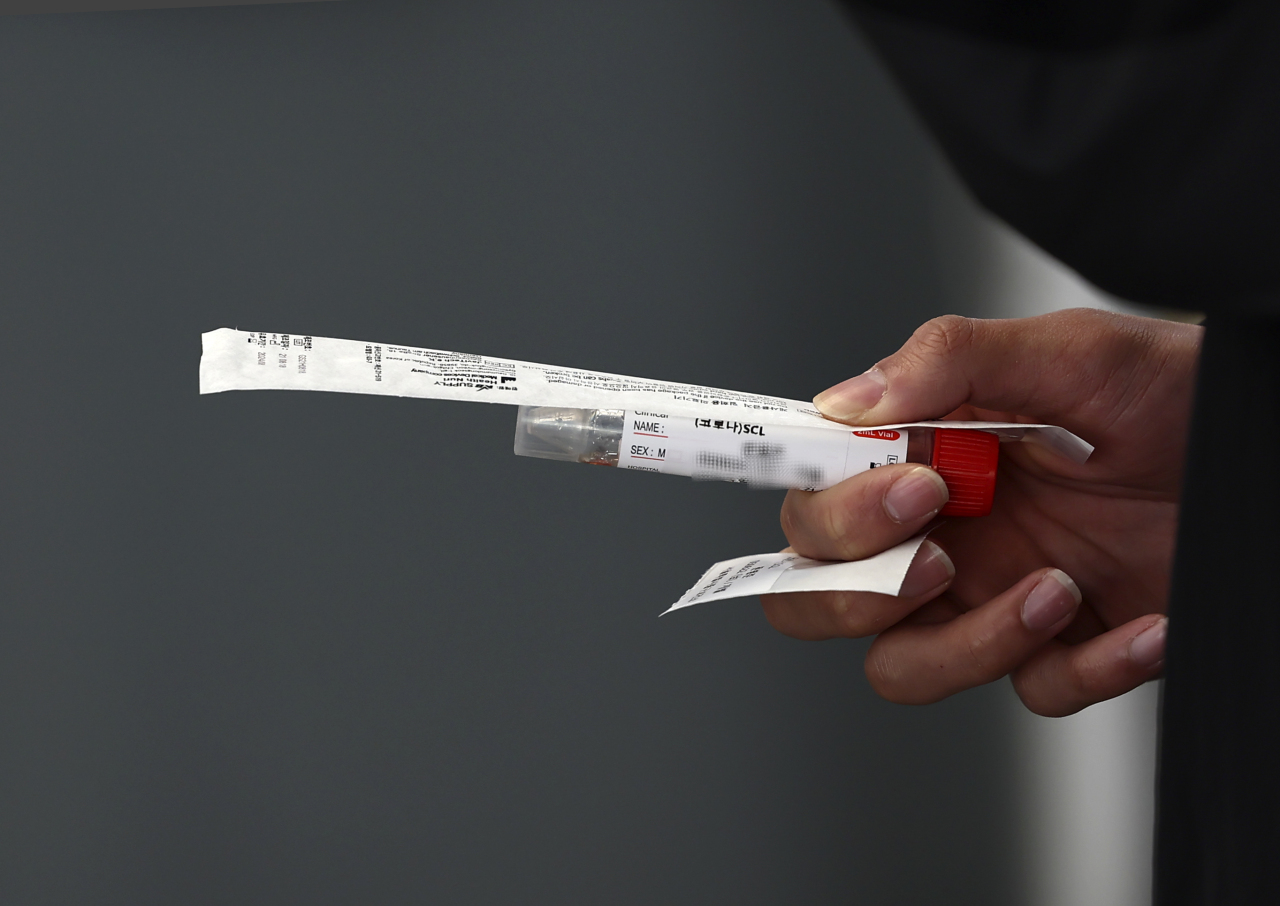S. Korea’s COVID-19 cases continue downward trend, govt. may lower infectious disease level soon
By Shim Woo-hyunPublished : April 10, 2022 - 15:36

S. Korea’s daily COVID-19 infections remained below 200,000 for the second straight day as of midnight Saturday. As the omicron wave shows a clear downward trend, the government noted it will soon announce a post-omicron scheme, along with a decision on downgrading the infectious disease level of COVID-19.
According to the Korea Disease Control and Prevention Agency‘s report Sunday, the country added 164,481 new COVID-19 infections during the 24 hours of Saturday, bringing the total caseload to 15,333,670.
The daily tally was down from 185,566 cases reported a day earlier and 234,301 cases a week prior.
As the country’s omicron wave shows signs of receding, the government said it will announce a post-omicron scheme soon, through which it will aim at normalizing the medical system to pre-pandemic days.
The government is expected to possibly announce the post-omicron scheme on Friday, when it reveals adjusted social distancing rules.
The government‘s post-omicron scheme may include a plan to downgrade the infectious disease level of COVID-19, which is currently classified as a class 1 infectious disease, the highest in the four-tier classification, along with diseases like the Ebola virus and the Middle East respiratory syndrome.
Prime Minister Kim Boo-kyum said in an announcement on Friday last week that the government will try to make its decision on the downgrading of COVID-19 as soon as possible.
Once COVID-19 is downgraded, the country‘s COVID-19 response will change greatly.
Currently, all patients infected with a class 1 infectious disease, including COVID-19, should be isolated and treated in negative pressure rooms.
But, when it comes to class 2 infectious diseases, only patients infected with certain diseases -- including tuberculosis, measles and cholera -- require mandatory quarantine.
When the classification of COVID-19 is downgraded, the government can also allow COVID-19 patients to receive face-to-face treatment at local hospital facilities instead of being treated only at designated hospitals.
As of Friday, the government has designated 5,547 medical facilities where COVID-19 patients can receive face-to-face treatments, but they have fallen short in delivering medical care.
The government will become able to shorten the compulsory quarantine period for all COVID-19 patients or possibly get rid of quarantine altogether as well, once the infectious disease level of COVID-19 is set lower.
Experts here, however, have raised concerns over the government’s recent move toward endemic COVID-19.
Chief infectious disease specialist Dr. Eom Joong-sik of Gachon University Medical Center said the government may want to take it slow by normalizing the medical system to pre-pandemic days due to the possibility of the emergency of a new variant in the future.
Other experts also have argued that returning to normalcy is perhaps too early since the number of COVID-19 related deaths and severe cases continues to remain high.
The number of COVID-19 related deaths on Saturday was 329, remaining above 300 for a fifth straight day. The fatality rate stood at 0.13 percent.
The number of critically ill patients was 1,114, up 15 from a day earlier.
Meanwhile, the government hinted that it could put an end to existing social distancing rules and allow people to go mask-free outside if the omicron wave continues to recede.
The government will announce its adjusted social distancing rules Friday.







![[KH Explains] Hyundai's full hybrid edge to pay off amid slow transition to pure EVs](http://res.heraldm.com/phpwas/restmb_idxmake.php?idx=644&simg=/content/image/2024/04/18/20240418050645_0.jpg&u=20240419100350)







![[From the Scene] Monks, Buddhists hail return of remains of Buddhas](http://res.heraldm.com/phpwas/restmb_idxmake.php?idx=652&simg=/content/image/2024/04/19/20240419050617_0.jpg&u=20240419175937)

![[KH Explains] Hyundai's full hybrid edge to pay off amid slow transition to pure EVs](http://res.heraldm.com/phpwas/restmb_idxmake.php?idx=652&simg=/content/image/2024/04/18/20240418050645_0.jpg&u=20240419100350)

![[Today’s K-pop] Illit drops debut single remix](http://res.heraldm.com/phpwas/restmb_idxmake.php?idx=642&simg=/content/image/2024/04/19/20240419050612_0.jpg&u=)